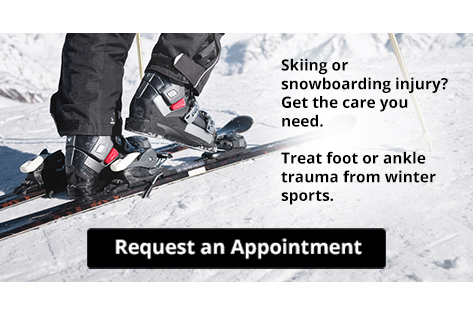Items filtered by date: February 2024
Development and Fascinating Facts About Children’s Feet
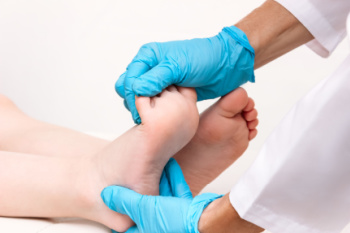
The development of children's feet is a remarkable journey marked by significant milestones and fascinating facts. At birth, babies' feet are soft and pliable, primarily composed of cartilage and fat pads. As children grow, their feet undergo various changes to support their increasing mobility and weight-bearing activities. By the age of two, the arches of the feet begin to form, providing stability and flexibility for walking and running. Children's feet can grow up to two sizes in a year during early childhood, and many parents marvel at how rapidly they develop. Another intriguing fact is that children's feet are more susceptible to deformities like flat feet or toe abnormalities due to their growing bones and ligaments. Proper footwear and regular foot checks are essential for monitoring healthy foot development and addressing any concerns early on. Understanding the intricacies of kids' feet empowers parents and caregivers to support their children's foot health and overall well-being as they embark on their journey of growth and exploration. If your child is experiencing foot problems or you are interested in learning more about the changes in your child’s feet, it is suggested that you schedule an appointment with a podiatrist who can provide you with treatment or the information you are seeking.
Making sure that your children maintain good foot health is very important as they grow. If you have any questions, contact one of our podiatrists of North Eastern Ohio Podiatry Group LLC. our doctors can provide the care you need to keep you pain-free and on your feet.
Keeping Children's Feet Healthy
Having healthy feet during childhood can help prevent medical problems later in life, namely in the back and legs. As children grow, their feet require different types of care. Here are some things to consider...
Although babies do not walk yet, it is still very important to take care of their feet.
Avoid putting tight shoes or socks on his or her feet.
Allow the baby to stretch and kick his or her feet to feel comfortable.
As a toddler, kids are now on the move and begin to develop differently. At this age, toddlers are getting a feel for walking, so don’t be alarmed if your toddler is unsteady or ‘walks funny’.
As your child gets older, it is important to teach them how to take care of their feet.
Show them proper hygiene to prevent infections such as fungus.
Be watchful for any pain or injury.
Have all injuries checked by a doctor as soon as possible.
Comfortable, protective shoes should always be worn, especially at play.
If you have any questions please feel free to contact our offices located in Willoughby Hills, Euclid, and Beachwood, OH . We offer the newest diagnostic and treatment technologies for all your foot and ankle needs.
Causes of Bunions
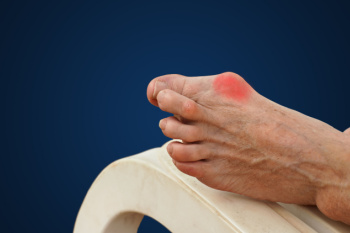
Bunions develop due to prolonged stress on the metatarsophalangeal joint, often resulting from wearing ill-fitting shoes that force the big toe inward. This pressure causes the first metatarsal to angle outward and the big toe to point in the opposite direction, forming a noticeable bump. Additionally, genetic factors, low arches, flat feet, loose joints, and arthritis can contribute to bunion formation. Narrow, pointed-toe, or high-heeled footwear, commonly worn by women, can also heighten the risk. Furthermore, running in shoes with tapered toe boxes and elevated heels may exacerbate bunions over time. Bunions can lead to pain, discomfort, and even deformities such as hammertoes or corns. Prevention strategies include wearing wide-toed shoes, avoiding high heels, using toe spacers, and performing bunion massages to alleviate symptoms and prevent further complications. If you have a painful bunion, it is suggested that you schedule an appointment with a podiatrist for an evaluation and treatment that is best for you.
If you are suffering from bunions, contact one of our podiatrists of North Eastern Ohio Podiatry Group LLC. our doctors can provide the care you need to keep you pain-free and on your feet.
What Is a Bunion?
A bunion is formed of swollen tissue or an enlargement of boney growth, usually located at the base joint of the toe that connects to the foot. The swelling occurs due to the bones in the big toe shifting inward, which impacts the other toes of the foot. This causes the area around the base of the big toe to become inflamed and painful.
Why Do Bunions Form?
Genetics – Susceptibility to bunions are often hereditary
Stress on the feet – Poorly fitted and uncomfortable footwear that places stress on feet, such as heels, can worsen existing bunions
How Are Bunions Diagnosed?
Doctors often perform two tests – blood tests and x-rays – when trying to diagnose bunions, especially in the early stages of development. Blood tests help determine if the foot pain is being caused by something else, such as arthritis, while x-rays provide a clear picture of your bone structure to your doctor.
How Are Bunions Treated?
- Refrain from wearing heels or similar shoes that cause discomfort
- Select wider shoes that can provide more comfort and reduce pain
- Anti-inflammatory and pain management drugs
- Orthotics or foot inserts
- Surgery
If you have any questions, please feel free to contact our offices located in Willoughby Hills, Euclid, and Beachwood, OH . We offer the newest diagnostic and treatment technologies for all your foot care needs.
Causes of Foot Blisters in Low Friction Scenarios and Soft Tissue Distortions
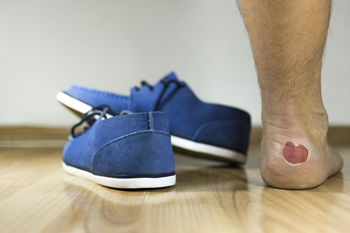
Foot blisters, those fluid-filled sacs that form on the skin, often arise from a combination of factors, shedding light on the intricate nature of their formation. In scenarios of low friction, prolonged moisture exposure, and ill-fitting footwear, the outer layer of the skin becomes susceptible to damage. Excessive moisture softens the skin, making it more prone to friction and subsequent blistering. Additionally, wearing tight or poorly cushioned shoes can create constant rubbing against the skin, aggravating the vulnerability. Soft tissue distortions, such as bunions or hammertoes, contribute to increased pressure on specific areas of the foot, intensifying the likelihood of blister formation. Understanding the interplay of these factors underscores the importance of proper footwear, moisture management, and addressing foot deformities to prevent blistering. By acknowledging the various causes of foot blisters, patients can take proactive measures to safeguard their feet and maintain optimal skin health. If you have developed blisters on your feet that have become infected, it is suggested that you confer with a podiatrist who can treat this condition, and offer effective blister prevention techniques.
Blisters are prone to making everyday activities extremely uncomfortable. If your feet are hurting, contact one of our podiatrists of North Eastern Ohio Podiatry Group LLC. our doctors can provide the care you need to keep you pain-free and on your feet.
Foot Blisters
Foot blisters develop as a result of constantly wearing tight or ill-fitting footwear. This happens due to the constant rubbing from the shoe, which can often lead to pain.
What Are Foot Blisters?
A foot blister is a small fluid-filled pocket that forms on the upper-most layer of the skin. Blisters are filled with clear fluid and can lead to blood drainage or pus if the area becomes infected.
How Do Blisters Form?
Blisters on the feet are often the result of constant friction of skin and material, usually by shoe rubbing. Walking in sandals, boots, or shoes that don’t fit properly for long periods of time can result in a blister. Having consistent foot moisture and humidity can easily lead to blister formation.
Prevention & Treatment
It is important to properly care for the affected area in order to prevent infection and ease the pain. Do not lance the blister and use a Band-Aid to provide pain relief. Also, be sure to keep your feet dry and wear proper fitting shoes. If you see blood or pus in a blister, seek assistance from a podiatrist.
If you have any questions, please feel free to contact our offices located in Willoughby Hills, Euclid, and Beachwood, OH . We offer the newest diagnostic and treatment technologies for all your foot care needs.
Injury From a Winter Sport? Get the Care You Need
Foot Health Tips for Seniors
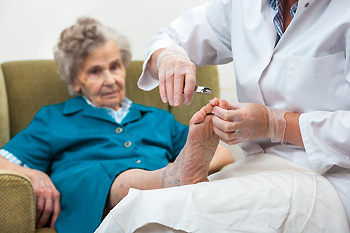
Maintaining healthy feet as you age is an important way to improve overall well-being. Normal changes like foot widening, thinning skin, and reduced padding are common in older adults. However, wearing proper footwear, including well-fitted shoes and custom orthotic inserts, can help to alleviate discomfort. Establishing a regular foot care routine, including washing, moisturizing, and trimming the toenails, is essential. Engaging in light exercise promotes circulation and flexibility, benefiting foot health as well as overall well being. Be vigilant for abnormal signs, such as persistent sores, joint pain, bunions, hammertoes, or frequent falls, which may indicate underlying health issues that require medical attention. Regular podiatric check-ups are a good way to monitor foot health and address concerns as they arise. Opt for foot-friendly shoes with a wide toe box and low heels to reduce pressure and minimize the risk of falls. For help with any foot problems that arise as you age, it is suggested you schedule regular visits with a podiatrist.
Proper foot care is something many older adults forget to consider. If you have any concerns about your feet and ankles, contact one of our podiatrists from North Eastern Ohio Podiatry Group LLC. our doctors can provide the care you need to keep you pain-free and on your feet.
The Elderly and Their Feet
As we age we start to notice many changes in our body, but the elder population may not notice them right away. Medical conditions may prevent the elderly to take notice of their foot health right away. Poor vision is a lead contributor to not taking action for the elderly.
Common Conditions
- Neuropathy – can reduce feeling in the feet and can hide many life-threatening medical conditions.
- Reduced flexibility – prevents the ability of proper toenail trimming, and foot cleaning. If left untreated, it may lead to further medical issues.
- Foot sores – amongst the older population can be serious before they are discovered. Some of the problematic conditions they may face are:
- Gouging toenails affecting nearby toe
- Shoes that don’t fit properly
- Pressure sores
- Loss of circulation in legs & feet
- Edema & swelling of feet and ankles
Susceptible Infections
Diabetes and poor circulation can cause general loss of sensitivity over the years, turning a simple cut into a serious issue.
If you have any questions please feel free to contact our offices located in Willoughby Hills, Euclid, and Beachwood, OH . We offer the newest diagnostic and treatment technologies for all your foot and ankle needs.
